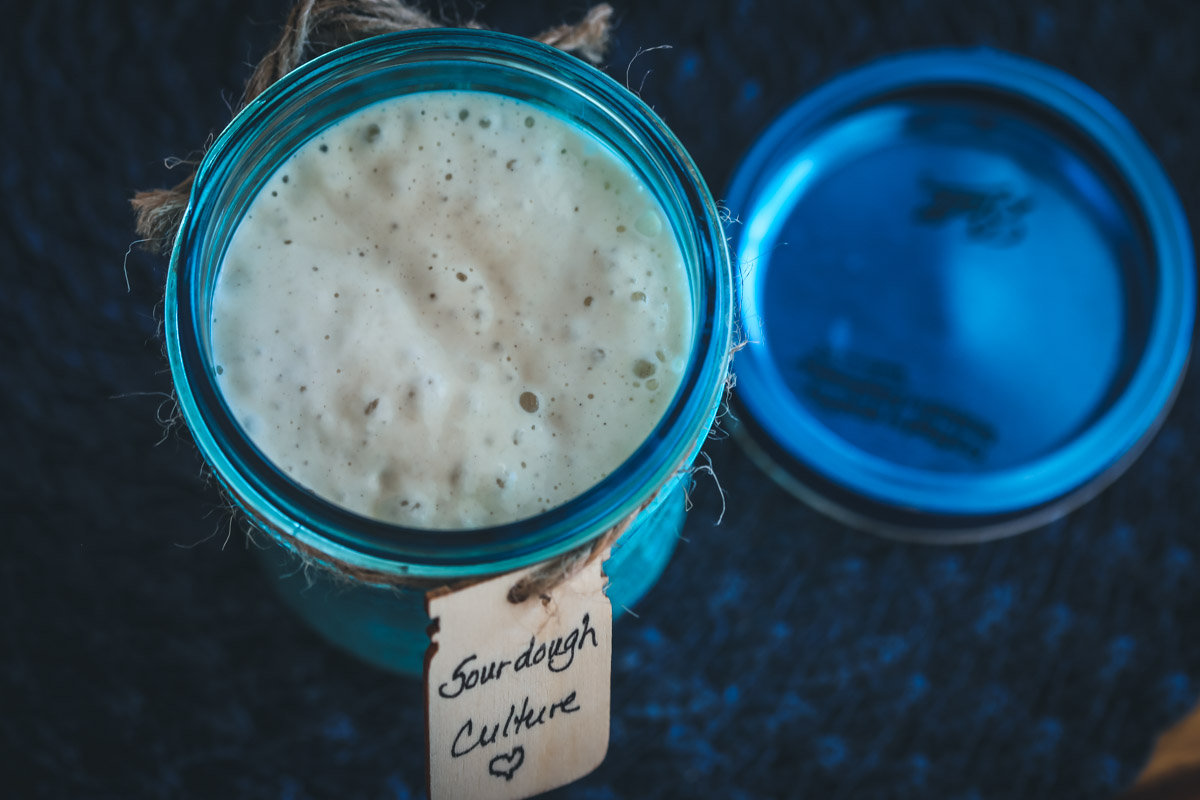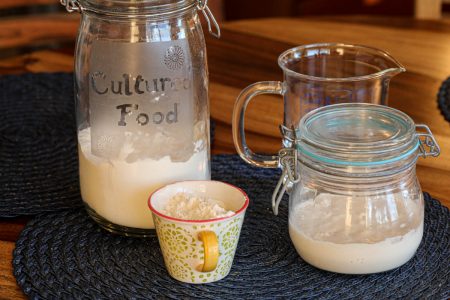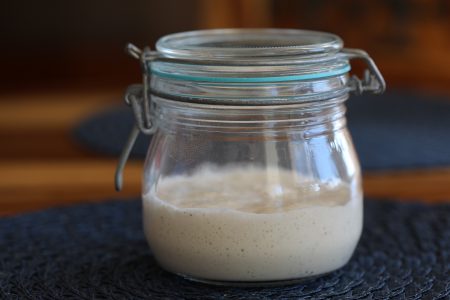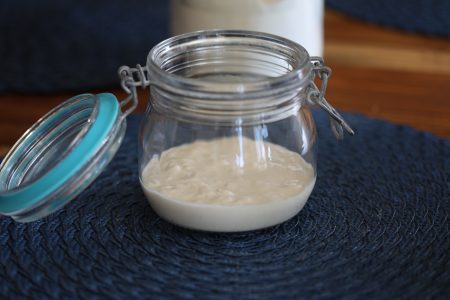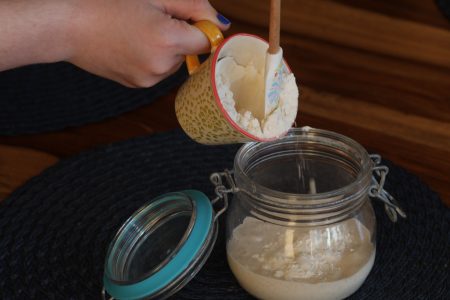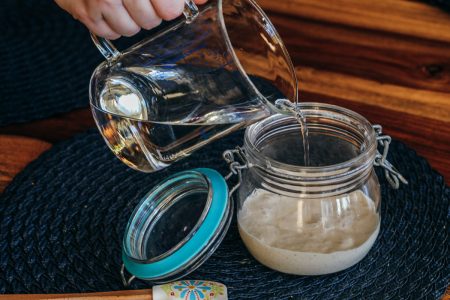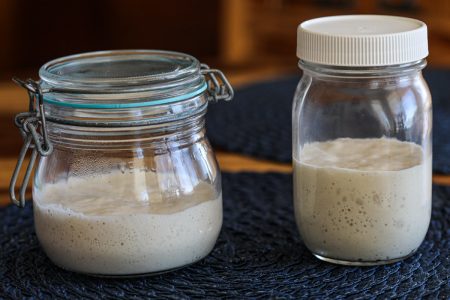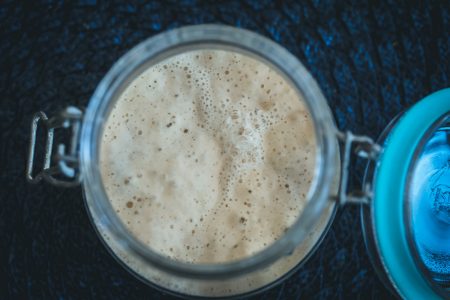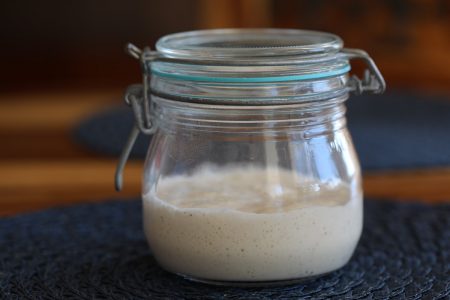How to Use Your Sourdough Starter
A sourdough starter must be fed and cared for, just like a pet! You're going to hear me repeat again and again how important it is to feed your starter a 1-1-1 ratio of flour, water, and starter. If you have too much starter it gets too active and eats all the food and won't be as bubbly. If you have too much starter and don't want to throw it out, check out these recipes: Leftover Sourdough Starter RecipesWe also have a FAQ's page that can answer a lot of questions.
Servings: 1 cups
Ingredients
- 1 pint or quart canning jar – Use a clear jar so you can check to see how many bubbles are on the sides of your starter.
- ½ cup Sourdough Starter – If you have less than ½ cup this is ok. You just need a little starter to make more.
- ½ cup Premium Natural All-purpose Flour – (do not use sprouted flour) See note below*
- ½ cup Water spring or filtered with minerals
Every ingredient with a link was selected by me to make it easier for you. I may receive a small affiliate commission if you buy something through my links. Thank you! ❤️
Instructions
- Take your sourdough starter from the refrigerator. I usually feed my starter the night before I am going to use it. You don’t have to feed it at night, you can do it anytime, just give it at least 6-12 hours to ferment (until it looks bubbly, especially on the sides of the jar) before you use it to make your bread.
- The starter that is left in the jar needs to be fed equal portions of flour and water. Stir it together in the jar thoroughly and then place in the fridge until you need to feed it or make another loaf. Even if you only have a tablespoon of starter left or just some on the sides of the jar, you can make more starter from this. Give it equal portions of flour and water and it will make it into more starter. So say you only have a few spoonfuls of starter left, feed it ½ cup of flour and ½ cup water and let it ferment on the counter. (DON'T use more starter than the other ingredients!)
- Refrigerating – Once your sourdough starter is safely in the refrigerator, it will need a little attention, although once it's cold and relatively dormant, it can survive between "feedings." It is certainly not hard to care for, but it won't just sit for months on end like a packet of commercially dried yeast either. Feed it at least once a week on the counter or in the fridge. It just needs more flour and water in equal amounts of starter, flour, and water as this is its food and once it is out of food it will eventually die. (DON'T use more starter than the other ingredients!)
Notes
I feed my starter Premium Natural White All-Purpose Flour. You can feed your starter whole wheat flour which contains many mineral, but always look for high protein content in your flour. Ideally, your flour should have 11-13 % protein content to make the best bread with the highest rise. The flour we use has one of the highest protein unbleached white flour available. This flour has 13.33% protein content.
It can be purchased in bulk amount at many grocery stores, Amazon.com, and Walmart.
Here’s what the producers of Wheat Montana Natural White All-Purpose Flour say about its attributes: “This is the highest protein unbleached white flour available. You will find it to be the best white baking flour you’ve ever used. Carefully milled to exact specifications and enriched with B-vitamins, niacin, and iron, we also add a small amount of malted barley flour to this blend for further enhancement of final product consistency. Whether you are baking at sea level or high altitude, this flour will perform to your highest expectations.”
You can also use bread flour or a good quality unbleached white flour whole wheat flour, or rye which is wonderful too. You’ll need to use a flour that does not add chemicals or one that is bleached, otherwise, your starter might not get bubbly. Bread flour is what is most commonly used by bread makers because of the high protein count in the flour. A high protein count makes the bread rise higher. Whole wheat flour will make a more dense loaf that doesn’t rise as high. White wheat flours work better and Prairie Gold Wheat Montana is a good one to use if you want to use mostly wheat flour.
If you want to make Einkorn bread then you’ll need to convert your starter too and Einkorn flour starter and I have a recipe to help you do this. Einkorn Sourdough Starter
You can also purchase my Live Dehydrated Einkorn starter if you want a fast start.
Don’t use sprouted flours to make sourdough bread. The process of sprouting breaks down the grain and then it doesn’t work as well for the sourdough culture.


